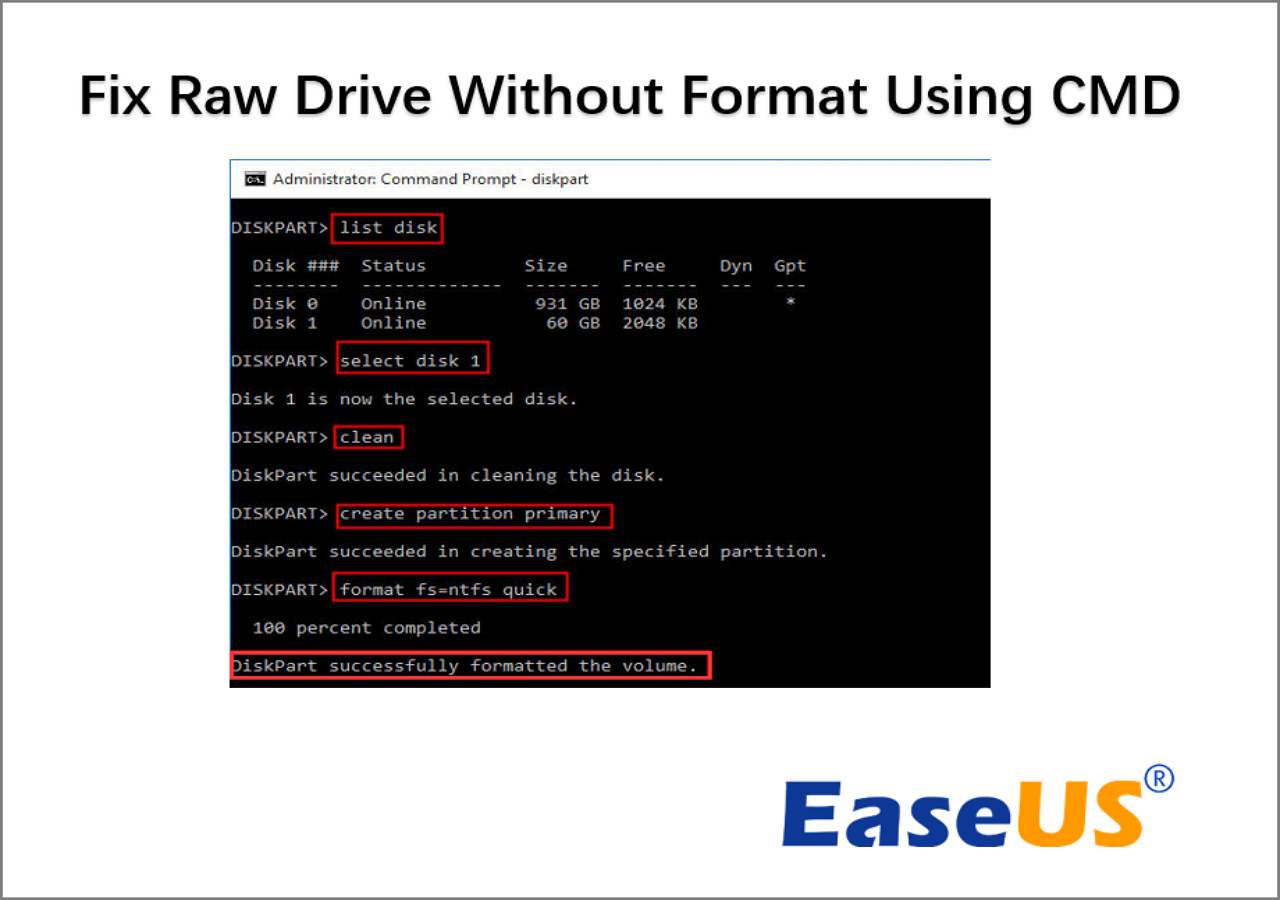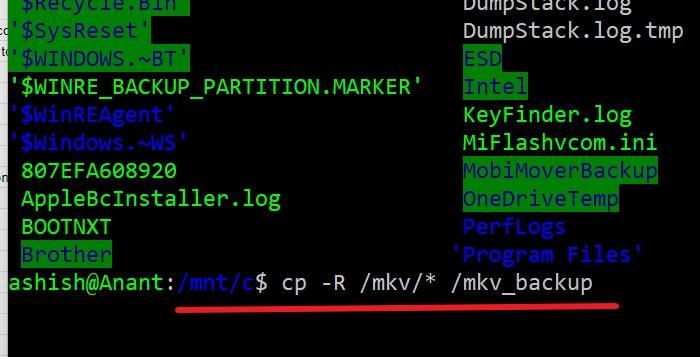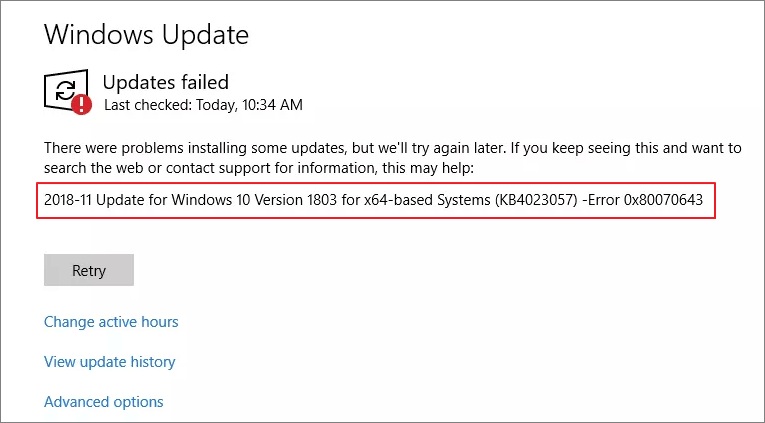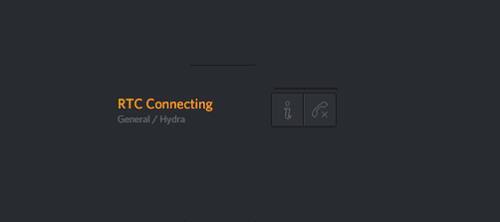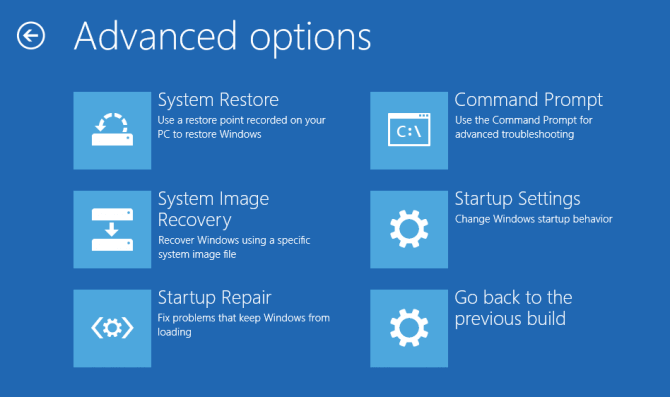-
![]() How to Fix Raw Drive Without Formatting or Losing Data
How to Fix Raw Drive Without Formatting or Losing Data December 12,2025
December 12,2025 6 min read
6 min read -
![]()
-
![]() Red Dead Redemption 2 Lost Save Game, How to Recover?
Red Dead Redemption 2 Lost Save Game, How to Recover? December 12,2025
December 12,2025 6 min read
6 min read -
![]()
-
![]()
-
![]() How to Fix 'Class Not Registered' Error | 7 Solutions
How to Fix 'Class Not Registered' Error | 7 Solutions December 12,2025
December 12,2025 6 min read
6 min read -
![]() Can VLC Repair MP4? Look How to Repair Corrupted MP4 Video Files Using VLC
Can VLC Repair MP4? Look How to Repair Corrupted MP4 Video Files Using VLC December 12,2025
December 12,2025 6 min read
6 min read -
![]() Command Cannot Be Performed Because a Dialog Box is Open | How to Fix
Command Cannot Be Performed Because a Dialog Box is Open | How to Fix December 12,2025
December 12,2025 6 min read
6 min read -
![]() Discord RTC Connecting Stuck? Troubleshoot This Error Now (7 Ways)
Discord RTC Connecting Stuck? Troubleshoot This Error Now (7 Ways) December 12,2025
December 12,2025 6 min read
6 min read -
![]() Fixed: Restart to Repair Drive Errors on Windows 10
Fixed: Restart to Repair Drive Errors on Windows 10 December 12,2025
December 12,2025 6 min read
6 min read
Page Table of Contents
"Can I turn off OneDrive in Windows 10 as it keeps syncing my files to OneDrive? And I even lost some files saved on my local OneDrive folder when I removed them from the Cloud. How am I supposed to restore the lost OneDrive Files?"
Don't worry if you don't want to OneDrive keeps syncing your files on Windows 10, the easiest way is to disable or unlink it. Follow this complete guide and learn to disable OneDrive and fix OneDrive issues on your computer now.
| Workable Solutions | Step-by-step Troubleshooting |
|---|---|
| 1. Unlinking Account | Click the white or blue OneDrive cloud icon on the taskbar in Windows 10...Full steps |
| 2. Hiding or Uninstalling OneDrive | Click the OneDrive icon on the taskbar in Windows 10. Click "Help & Settings"...Full steps |
| 3. Stop File Syncing in OneDrive | Click the OneDrive icon on the taskbar, select "...More" or "Help & Settings", and click "Pause Syncing"...Full steps |
| 4. Disable via Group Policy | Press Windows + R keys, to open the run dialog, type gpedit.msc and click "OK"...Full steps |
| 5. Disable It Using Registry Editor | Press Windows + R keys, type regedit, and click "OK". When the Registry Editor opens...Full steps |
Note: If you are currently with the OneDrive file loss issue, go and follow the 3 ways to recover lost OneDrive files in Windows 10 first before you disable OneDrive.
What Is OneDrive?
OneDrive is designed for personal cloud storage that saves your files and photos to OneDrive, allowing you to access them from any device, anywhere.
Microsoft has currently upgraded OneDrive to several editions that both home users and business users can all use it. And you can pick a suitable edition to satisfy your need in backing up and sharing files online via OneDrive:
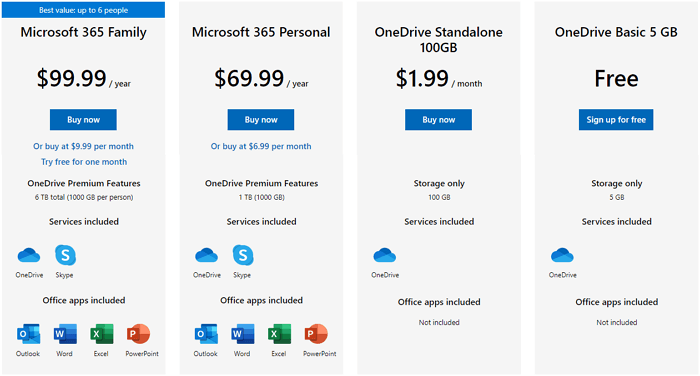
Why Do You Need and Don't Need OneDrive
So why are there so many people recommending OneDrive and also some of them are trying to disable or uninstall OneDrive in Windows 10? Let's see:
Why do you need OneDrive?
Here is a list of features that you may like:
- Access Anywhere: Accessing, editing, and sharing files anywhere on all your devices.
- Protect & Backup: Your files won't be lost with the device when they are saved in OneDrive.
- Real-Time Collaborate: Share and edit documents, photos in real-time with Office apps.
Accordingly, if you prefer a reliable file backup plan and want to access and share files with your friends, OneDrive is an ideal tool.
Why do you need to remove or disable OneDrive?
According to some OneDrive users, they also want to disable and even uninstall OneDrive from their computers. Here is a list of reasons that can explain why:
- Syncing feature cause file loss on OneDrive after deleting local drive data.
- OneDrive starts automatically and runs in the background, taking high CPU and RAM usage.
- OneDrive folder taking large space on a local drive.
- OneDrive runs out of space and extending cloud storage chards high fees.
- Simply don't like using OneDrive.
So how to disable, unlink, remove, or even uninstall OneDrive from your computer? In the next part, we'll take Windows 10 as an example that you can follow to remove OneDrive in 5 reliable ways.
How to Disable, Unlink, or Remove OneDrive in Windows 10 - 5 Ways
In this part, we collected 5 ways that can help you disable, unlink, and even remove OneDrive in Windows 10. The methods are also working on Windows 8.1/8/7, etc., computers. Pick the suitable method and follow to remove OneDrive from your computer now:
Note: As some of the methods may cause OneDrive file loss. Make sure that you back up important OneDrive files to an external drive first.
#1. Disable OneDrive by Unlinking Account
Source: Microsft Official solution
https://support.microsoft.com/en-us/office/turn-off-disable-or-uninstall-onedrive-f32a17ce-3336-40fe-9c38-6efb09f944b0
Step 1. Click the white or blue OneDrive cloud icon on the taskbar in Windows 10.
Step 2. Click "Help & Settings", then select "Settings".
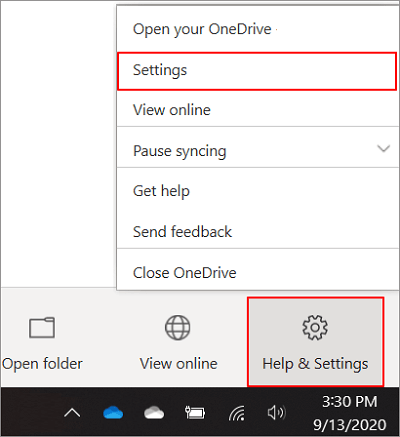
Step 3. Go to the Account tab, click "Unlink this PC" and select "Unlink account".
Then click "OK" to confirm.
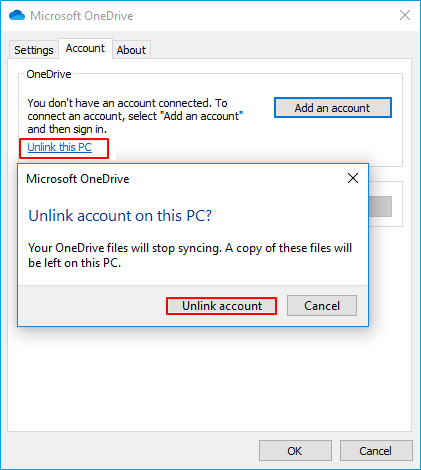
#2. Permanently Disable/Remove OneDrive - Hide or Uninstall OneDrive
Source: Microsft Official solution
https://support.microsoft.com/en-us/office/turn-off-disable-or-uninstall-onedrive-f32a17ce-3336-40fe-9c38-6efb09f944b0
Option 1. Hide OneDrive
As OneDrive is built into some versions of Windows and you can't directly uninstall it. Here is the guide for you to hide it from your PC:
Step 1. Click the OneDrive icon on the taskbar in Windows 10.
Step 2. Click "Help & Settings", and select "Settings".
Step 3. Under General, uncheck all the boxes.
Step 4. Go to the Auto Save tab, set the "Documents and Pictures" list to "This PC only", and uncheck the other boxes.
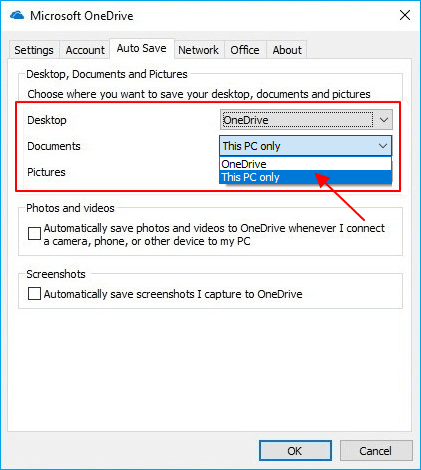
Step 5. Go to the Account tab, click "Choose folders". Check and uncheck the box at Sync all files and folders in my OneDrive.
Step 6. Click "OK" to save changes.
Step 7. Open Settings, go to the Account tab, click "Unlink OneDrive" and close the "Welcome to OneDrive" box.
Step 8. Open File Explorer, right-click OneDrive and click "Properties".
Step 9. Go to the General tab, check the "Hidden" box.
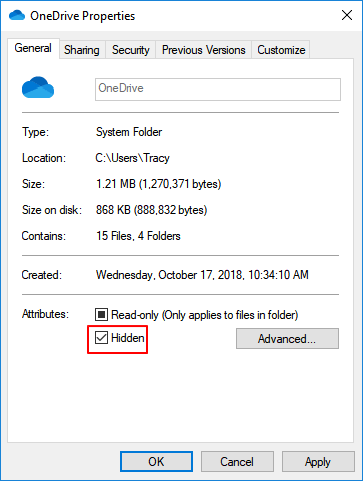
Step 10. Go to Help and Settings, select "Quit OneDrive".
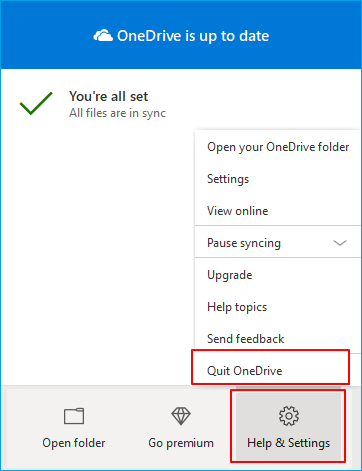
Option 2. Uninstall OneDrive
Step 1. Select the Start button, type Programs in the search box, and select "Add or remove programs".
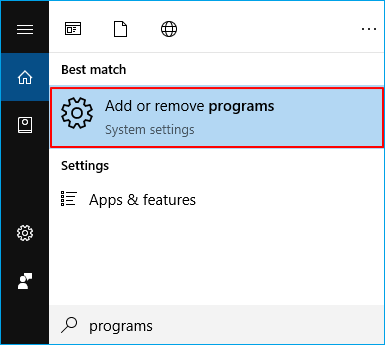
Step 2. Under Apps & features, select "Microsoft OneDrive" and select "Uninstall".
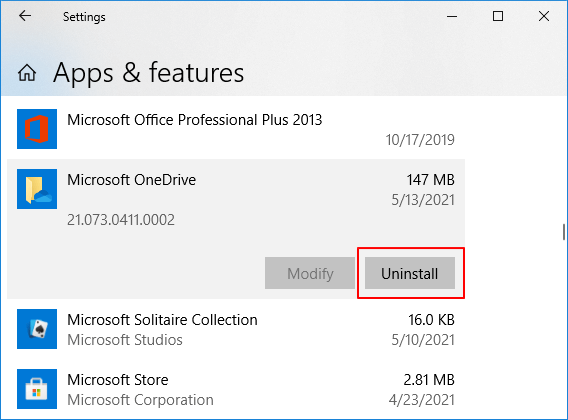
#3. Stop File/Folder Syncing in OneDrive Sync App
Source: Microsft Official solution
https://support.microsoft.com/en-us/office/choose-which-onedrive-folders-to-sync-to-your-computer-98b8b011-8b94-419b-aa95-a14ff2415e85
If syncing is a bad time or you don't want OneDrive syncing files to your PC, you can stop it from syncing files and folders.
According to some users, it's easy to lost files on your computer, especially when you delete files in OneDrive and turned on the syncing feature.
Step 1. Click the OneDrive icon on the taskbar, select "...More" or "Help & Settings", and click "Pause Syncing", select "2 hours".
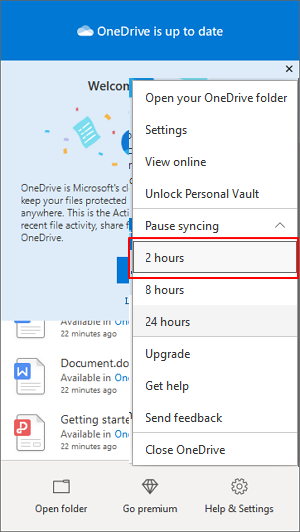
Step 2. Click OneDrive icon, select "Help & Settings", click "Settings".
Step 3. Go to the Account tab, select "Choose folders".
Step 4. In the Sync your OneDrive files to this PC window, uncheck folders that you don't want to sync to the computer and click "OK".
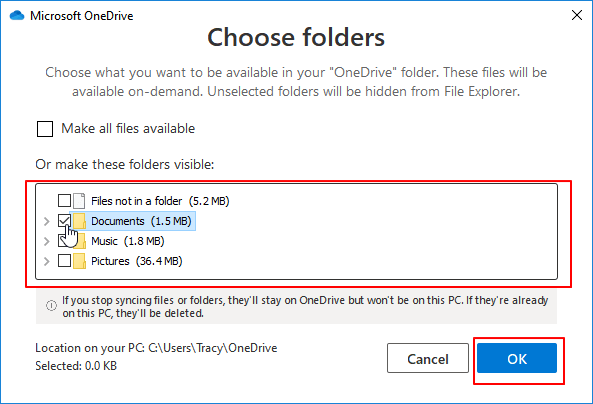
After this, you can edit and adjust files on OneDrive or your computer without affecting the data on the other platform.
OneDrive Not Syncing on Windows PC?
You'll learn some tips that will make sure that OneDrive is running correctly so that you can access and sync files. Also, remember to try the quick fixes first.
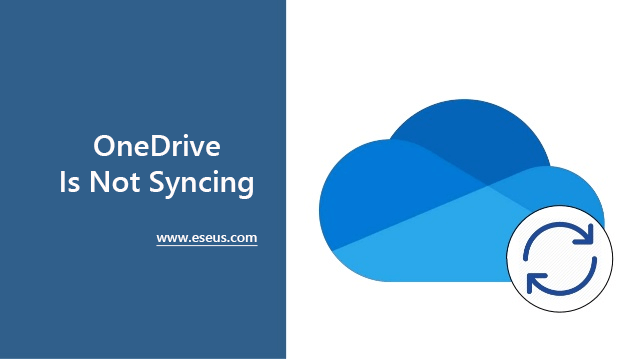
#4. Disable OneDrive via Group Policy
Step 1. Press Windows + R keys, to open the run dialog, type gpedit.msc and click "OK".
Step 2. When the Local Group Policy window opens, go to:
\Computer Configuration\Administrative Templates\Windows Components\OneDrive.
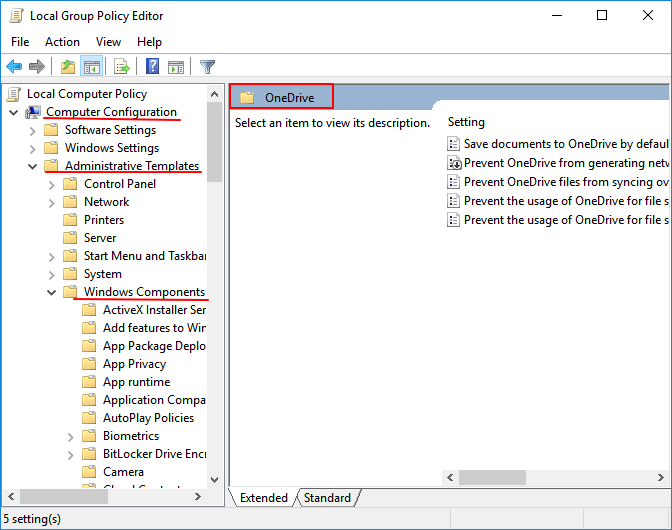
Step 3. Double-click on Prevent the usage of OneDrive for file storage.
Step 4. Check "Enabled" and click "Apply" and "OK" to save the changes.
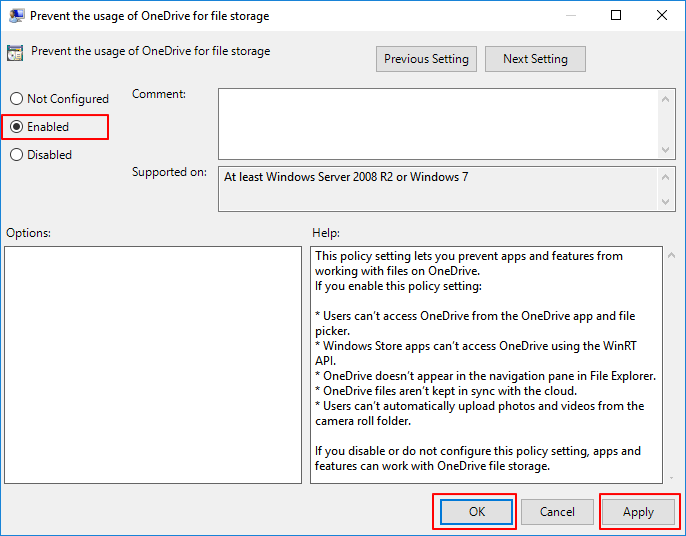
After this, restart the PC and you'll see that OneDrive is on your PC but not accessible now.
#5. Disable OneDrive Using Registry Editor
Note: It's normally not recommended that you use Registry Editor to disable OneDrive. Though it is workable any false operation may cause serious results.
So make sure that you be very careful while following the steps below to disable OneDrive:
Step 1. Press Windows + R keys, type regedit, and click "OK".
Step 2. When the Registry Editor opens, go to:
HKEY_LOCAL_MACHINE\SOFTWARE\Policies\Microsoft\Windows.
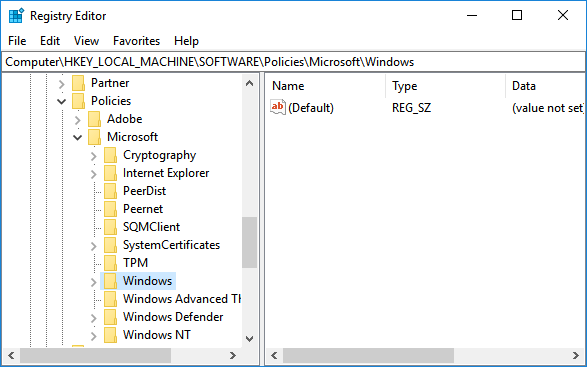
Step 3. Right-click Windows key and select "New" > "Key".
Step 4. Name the new key as "OneDrive".
Step 5. Select the OneDrive folder, and right-click on the empty area on the right pane and select "New" > "DWORD (32-bit) Value.
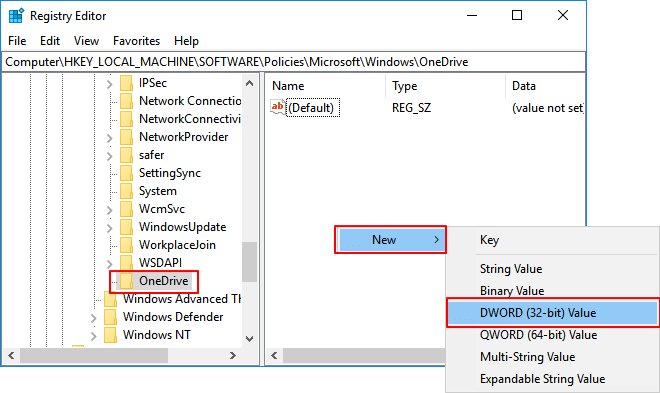
Step 6. Name the new key as "DisableFileSyncNGSC", double-click the key and change its value data to 1 and click "OK".
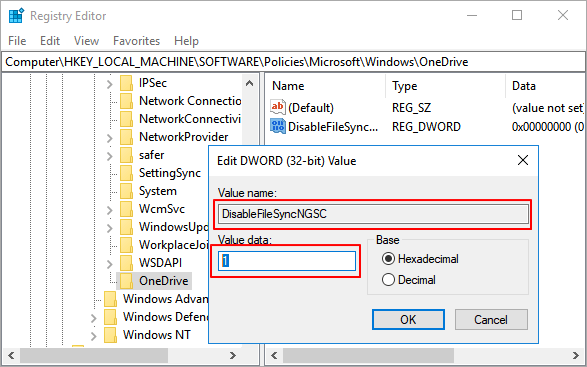
After this, restart your computer.
How to Access and Restore Lost or Deleted OneDrive Files - 3 Ways
Some of you may also want to know how to access and restore the lost OneDrive files online or on a local computer.
Here we've collected two ways that will help you out:
#1. Recover Deleted Files from OneDrive Recycle Bin
Step 1. Go to the OneDrive website:
https://go.microsoft.com/fwlink/p/?LinkID=251869
Step 2. Sign in with your account and click "Recycle Bin" on the left pane.
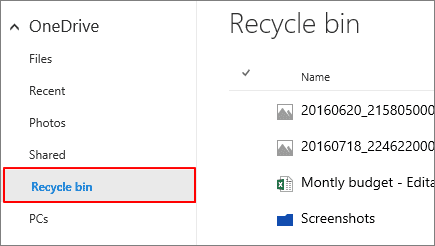
Step 3. Select files or folders that you deleted online, and move your mouse to point to the deleted items.
Click the circle check box that appears and click "Restore".
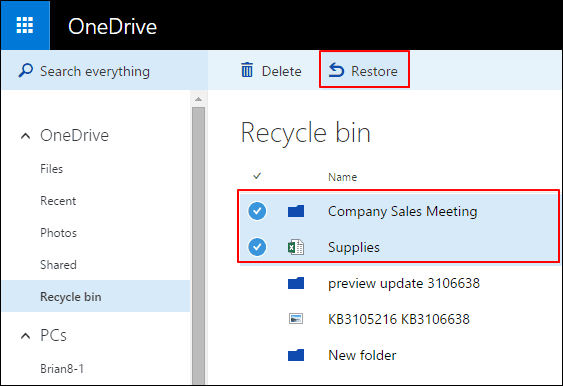
#2. Recover Deleted OneDrive Files or Folder on Your PC
Step 1. Open Recycle Bin on your computer and find the deletd files.
Step 2. Right-click the deleted OneDrive files or folder, and select "Restore".
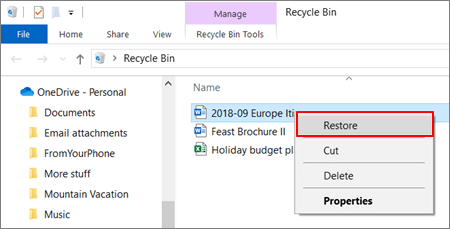
#3. Recover Permanently Deleted OneDrive Files on PC
When you deleted and emptied the OneDrive files from Recycle Bin on your computer, reliable EaseUS Data Recovery Wizard can help.
- Recover lost files, documents, photos, audio, music, emails effectively
- Recover files from emptied recycle bin, memory card, flash drive, digital camera, and camcorders
- Support over 1000 types of file recovery on both Windows and Mac PCs and laptops.
It will fully scan and restore the permanently deleted OneDrive files from your PC in only 3 steps as shown below:
Extra Tip: Your Best OneDrive Alternative for Windows 10/8/7
As for some users who give up OneDrive but still need a powerful file syncing tool for protection or automatically backing up data to a target storage device,you've come to the right place.
In this part, you'll find a perfect alternative tool - EaseUS Todo Backup to replace OneDrive for file syncing and data backup in Windows 10/8/7.
See what EaseUS Todo Backup do for you:
- 1. Support file backup, OS backup, Disk/Partition backup.
- 2. Support disk clone, system clone, and OS migration.
- 3. Support cloud backup, such as backup files to OneDrive, GoogleDrive, Dropbox, etc.
So how to make use of the OneDrive alternative - EaseUS Todo Backup in Windows 10? Let's see:
#1. Fully Back Up Windows 10 Data
#2. Automatically Back Up Windows 10 Files
#3. Transfer or Migrate Windows 10 OS to SSD Without Reinstallation
Disabling OneDrive Is Possible, Diable It without Damaging Your Files
On this page, we introduced what is OneDrive, discussed when should you use OneDrive and when you might want to disable it from your PC. Based on the different needs, we offered 5 ways to disable, remove, or unlink OneDrive from your Windows 10 computer.
For someone who deleted OneDrive files can also follow the 3 file recovery ways to bring back lost OneDrive data. Among these, EaseUS EaseUS Data Recovery Wizard is efficient and powerful in OneDrive file recovery.
Besides, if you need a OneDrive alternative tool to protect and back up your Windows files, EaseUS Todo Backup is worthy to try.
Was this page helpful?
-
Brithny is a technology enthusiast, aiming to make readers' tech lives easy and enjoyable. She loves exploring new technologies and writing technical how-to tips. In her spare time, she loves sharing things about her game experience on Facebook or Twitter.…
-
Evan Galasso is a digital forensics and data recovery engineer with over 10 years of experience in the field. He presents opinions on the current state of storage media, reverse engineering of storage systems and firmware, and electro-mechanical systems of SSDs and HDDs.…

20+
Years of experience

160+
Countries and regions

72 Million+
Downloads

4.9 +
Trustpilot Score


Free Data
Recovery Software
Recover data up to 2GB for free!

